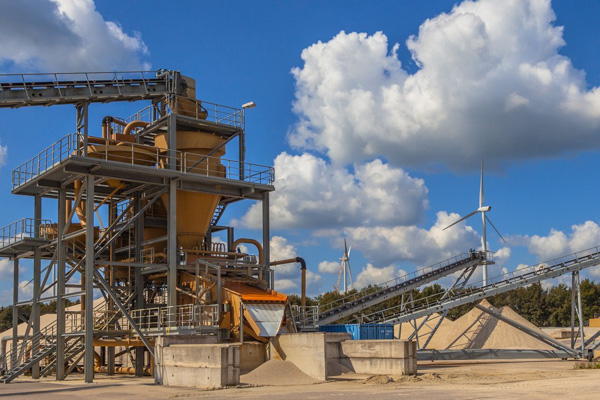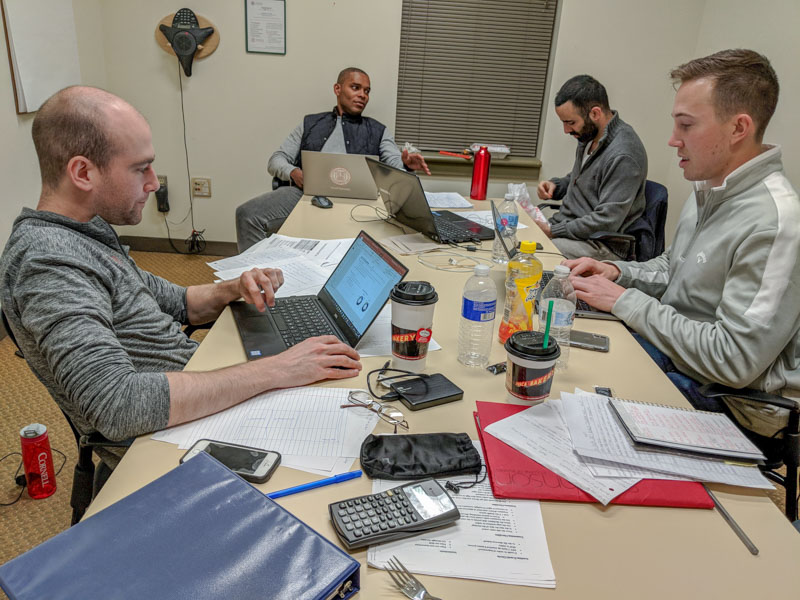IBI Case #2: Finding sand through mergers and acquisitions

By Nadia Zaman, Two Year MBA ’19
We landed at John F. Kennedy International Airport on Monday at 9 a.m. following an amazing spring break trek to Pakistan. About an hour after arriving back to the Ithaca campus, I received an email from Drew Pascarella, lecturer of finance and leader of the Investment Banking Immersion. Pascarella requested a presentation due on Sunday night regarding whether Hi-Crush (an oilfield services company) should acquire Smart Sand (a sand provider).
Formulating a game plan
Still recovering from jet lag, I texted the team to determine a game plan. The upcoming week was expected to be very busy considering we had a valuation case due Thursday morning and a High-Yield & Restructuring Conference on Friday. Since everyone on my team was still recovering from spring break, we decided to take it easy on Monday and start the grueling work of reading up on the industry and the companies on Tuesday. We would then value the acquisition target to determine a purchase price. Lastly, we would put together a pitchbook containing our analysis and recommendation. After sleeping for 12 hours, I woke at 4 a.m. on Tuesday and started reading about the oil field sector (OFS).

Key takeaways about the OFS sector:
- Highly fragmented industry with a small market controlled by large integrated service companies such as Halliburton and Baker Hughes
- Rapid innovation and constant search for cost cutting opportunities
- Oil prices are at three-year highs, leading to increased activity in the sector
- Geography matters! Currently, Permian Basin in Texas and Eastern New Mexico are hot spots
Considering I have no background in the oil and gas industry, I felt as though I had a good high-level overview.
Next, I learned more about the sand industry:
- Northern white sand is becoming an important component in drilling
- Oil and gas wells are using more sand to increase productivity
- Due to increased demand, sand prices have risen prompting acquisitions, especially in the Permian Basin (Texas)

To have a complete picture, I needed to learn more about the acquirer and target, both on a qualitative and quantitative basis:
Target – Smart Sand
- Business: Low cost producer of high quality northern white sand
- Geography: Has basin sites in the Permian Basin (sand hotspot!) and in Wisconsin
- Financial Strengths: Revenue is on a recurring, contractual basis and has minimal debt
Acquirer – Hi-Crush
- Business: Producer of high quality northern white sand
- Geography: Five facilities in Wisconsin and Texas
- Financial Strengths: Growth in revenue and adjusted Earnings Before Interest, Taxes, Depreciation and Amortization (EBITDA) driven by customer mix, customer demand, price increases, and volume expansion
Rationale for acquisition:
- Increase negotiating power with railroad operators for the transportation of sand
- Enhance the scale and volume of terminal network
- Greater exposure to Permian Basin assets, which will help meet higher sand demand
- Combined entity will create an improved financial position and a better operating scale
Developing a valuation for Smart Sand
After everyone on the team had a good understanding of the industry and the two companies, we worked on developing a valuation for Smart Sand.

Steps for developing a valuation:
- Find comparable companies—fortunately, the 10-k of each company listed competitors which we used as our comp set
- Find precedent transactions—this was a bit tricky since most of the mergers & acquisitions (M&A) transactions in the industry were private, so not much information was available; however, we decided to be creative and focused on Enterprise Value/number of reserve in million metric tons ratio
- Find an overlap between the two ranges of valuation from comparable companies and precedent transactions
We generated a purchase price of $10.16 per share, representing a 50 percent premium. It was determined that the financing of the acquisition will be with 100 percent debt since proforma leverage will still be low (under 2x) in comparison to peers.

Presentation day
Pascarella randomly chose two teams to present. From their presentations I had two main takeaways:
- Accretion and dilution is not a big determinant for whether a company should be acquired in OFS
- When presenting a purchase price to a client, show a range of the price instead of pinpointing one value. Two valuable key takeaways that I can apply in my summer internship to get a return offer.
Next up… bankruptcy and restructuring!

